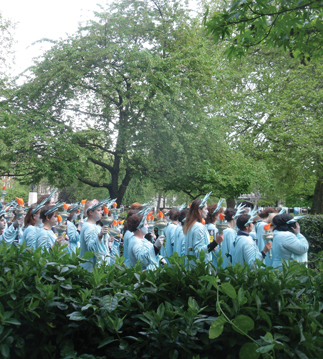It was just not cricket, writes Mark Rowe.
In recent years in Professional Security magazine, we’ve looked back at history a couple of times; on the 25th anniversary of the Hillsborough tragedy, and the centenary of the outbreak of war in 1914. We start an occasional series returning to episodes in security management history, in the year 1970.
If you want a story to show how security has progressed, well within living memory, see the start of the chapter ‘Cabinet life under Tony and Gordon’ in the memoir of Labour politician Peter Hain, Outside In (2012). As he walked up Downing Street to his first Cabinet meeting in 2002, his mind went back to spring 1969. In those days you could still walk to the Prime Minister Harold Wilson’s door, as Hain and other Young Liberal protesters did, ‘unfurling banners. I was photographed being carried off by a couple of constables, one holding my collar, the other my feet, to be dumped unceremoniously on Whitehall’.
Through the gates
Police now nodded Hain through the anti-terrorist gates with a ‘good morning sir’ smile. His remarkable journey from anti-apartheid demonstrator to privy councillor was full of irony. Hain, who hardly out of his teens led the protests that stopped the apartheid era South Africa cricket team from touring the UK in 1970 was by the 2000s trying to appoint a full-time director of security for the Palace of Westminster, as the embarrassingly bad security at the Houses of Parliament saw breaches by anti-hunt protesters and a Sun reporter. Hain also once had his Welsh home besieged by protesters. Parliament and sports grounds of 1970 had similar security; set in their ways, and maybe with some arrogance, neither saw the need for change.
Men in white coats
Lord’s the home of cricket had white-coated stewards who were famed for enforcing rules such as men (women not allowed) wearing a tie in the members’ pavilion, but not so good in a bomb scare or facing a demo. Hain, then, had an easy target, one of the three ingredients for his campaign. It was easy out of hours to scale the perimeter and dig up some of the playing field or spread weed-killer. You only had to pay at the gate and then shout and interrupt play. Such was what Hain called ‘direct action’. It was not as novel as he reckoned; some of those campaigning for the vote for women before 1914 had turned to arson. Another ingredient, to state the obvious, was to have some protesters. In a word, they were students like Hain. A demo outside the United States embassy in Grosvenor Square against the Vietnam War in 1968 had turned violent. Sport was an easier target than the South African economy, though protesters did also target Barclays Bank for doing business with apartheid. The final ingredient was publicity, via a willing media. As Hain wrote in his memoir: “Our whole strategy was predicated upon being open about our disruptive plans because it was public knowledge of our planned direct action which constituted our prime tactical weapon.” In other words, the threat of riot was as important as what the demonstrators actually did do – a sign of weakness. The protesters never had to own up to how many or few they were, or how disheartened they might be if some got arrested.
Called off
It never came to that because the tour was called off before it began. The then England captain Raymond Illingworth spoke for many in cricket when he complained that the game had been ‘caught in the crossfire’. The protesters had been ‘hardly civilised’ and ‘the most disgusting aspect of it’ had been threats against cricketers – and not only the South Africans. In his memoir Hain was coy about this; he and leaders could distance themselves from what local protesters said and did. Once Lord’s had strung barbed wire around its pitch, in a sense it had already lost. This affair, then, is still relevant for showing that what matters ultimately is a target’s pain threshold. Sport remains an easy target.
Picture by Mark Rowe; Grosvenor Square, London on April 27, 2017; demonstrators outside the US Embassy dressed as the Statue of Liberty.










